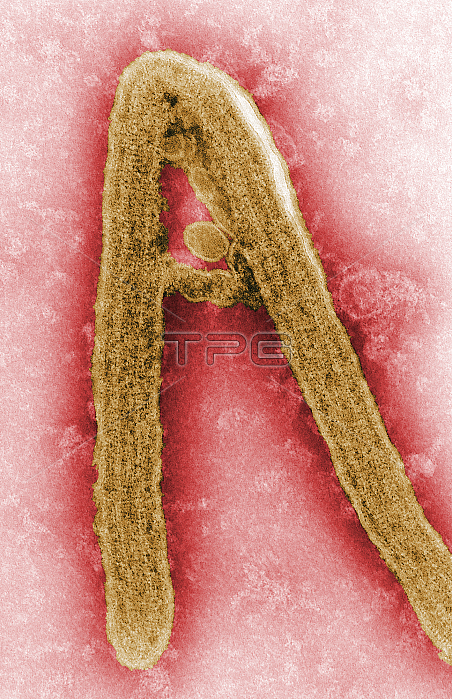
Negative stained transmission electron micrograph (TEM) depicts a Marburg virus virion, which had been grown in an environment of tissue culture cells. Marburg hemorrhagic fever is a rare, severe type of hemorrhagic fever which affects both humans and non-human primates. Caused by a genetically unique zoonotic RNA virus of the filovirus family, its recognition led to the creation of this virus family. After an incubation period of 5-10 days, the onset of the disease is sudden and is marked by fever, chills, headache, and myalgia. Nausea, vomiting, chest pain, a sore throat, abdominal pain, and diarrhea then may appear. Symptoms become increasingly severe and may include jaundice, inflammation of the pancreas, severe weight loss, delirium, shock, liver failure, and multi-organ dysfunction. Because many of the signs and symptoms of Marburg hemorrhagic fever are similar to those of other infectious diseases, such as malaria or typhoid fever, diagnosis of the disease can be difficult, especially if only a single case is involved.
| px | px | dpi | = | cm | x | cm | = | MB |
Details
Creative#:
TOP22225897
Source:
達志影像
Authorization Type:
RM
Release Information:
須由TPG 完整授權
Model Release:
N/A
Property Release:
No
Right to Privacy:
No
Same folder images:

 Loading
Loading